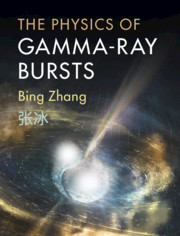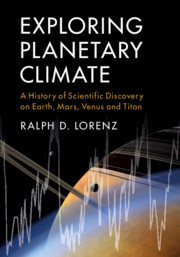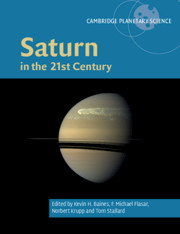Refine listing
Actions for selected content:
17002 results
12 - Mercury’s Hollows
-
-
- Book:
- Mercury
- Published online:
- 10 December 2018
- Print publication:
- 20 December 2018, pp 324-345
-
- Chapter
- Export citation
12 - Mercury’s Hollows
-
- Book:
- Mercury
- Published online:
- 10 December 2018
- Print publication:
- 20 December 2018, pp 324-345
-
- Chapter
- Export citation
Contents
-
- Book:
- Mercury
- Published online:
- 10 December 2018
- Print publication:
- 20 December 2018, pp ix-x
-
- Chapter
- Export citation

The Physics of Gamma-Ray Bursts
-
- Published online:
- 17 December 2018
- Print publication:
- 13 December 2018

Exploring Planetary Climate
- A History of Scientific Discovery on Earth, Mars, Venus and Titan
-
- Published online:
- 14 December 2018
- Print publication:
- 03 January 2019

Saturn in the 21st Century
-
- Published online:
- 13 December 2018
- Print publication:
- 06 December 2018
Foreword
-
- Book:
- The Physics of Gamma-Ray Bursts
- Published online:
- 17 December 2018
- Print publication:
- 13 December 2018, pp xv-xvi
-
- Chapter
- Export citation
Index
-
- Book:
- The Physics of Gamma-Ray Bursts
- Published online:
- 17 December 2018
- Print publication:
- 13 December 2018, pp 573-580
-
- Chapter
- Export citation
Contents
-
- Book:
- The Physics of Gamma-Ray Bursts
- Published online:
- 17 December 2018
- Print publication:
- 13 December 2018, pp v-xiv
-
- Chapter
- Export citation
10 - Progenitor
-
- Book:
- The Physics of Gamma-Ray Bursts
- Published online:
- 17 December 2018
- Print publication:
- 13 December 2018, pp 418-443
-
- Chapter
- Export citation
9 - Prompt Emission Physics
-
- Book:
- The Physics of Gamma-Ray Bursts
- Published online:
- 17 December 2018
- Print publication:
- 13 December 2018, pp 349-417
-
- Chapter
- Export citation
3 - Relativity
-
- Book:
- The Physics of Gamma-Ray Bursts
- Published online:
- 17 December 2018
- Print publication:
- 13 December 2018, pp 122-148
-
- Chapter
- Export citation
8 - Afterglow Physics
-
- Book:
- The Physics of Gamma-Ray Bursts
- Published online:
- 17 December 2018
- Print publication:
- 13 December 2018, pp 273-348
-
- Chapter
- Export citation
2 - GRB Phenomenology
-
- Book:
- The Physics of Gamma-Ray Bursts
- Published online:
- 17 December 2018
- Print publication:
- 13 December 2018, pp 27-121
-
- Chapter
- Export citation
1 - Introduction
-
- Book:
- The Physics of Gamma-Ray Bursts
- Published online:
- 17 December 2018
- Print publication:
- 13 December 2018, pp 1-26
-
- Chapter
-
- You have access
- Export citation
4 - Relativistic Shocks
-
- Book:
- The Physics of Gamma-Ray Bursts
- Published online:
- 17 December 2018
- Print publication:
- 13 December 2018, pp 149-181
-
- Chapter
- Export citation
Preface
-
- Book:
- The Physics of Gamma-Ray Bursts
- Published online:
- 17 December 2018
- Print publication:
- 13 December 2018, pp xvii-xx
-
- Chapter
- Export citation
11 - Central Engine
-
- Book:
- The Physics of Gamma-Ray Bursts
- Published online:
- 17 December 2018
- Print publication:
- 13 December 2018, pp 444-472
-
- Chapter
- Export citation
12 - Non-Electromagnetic Signals
-
- Book:
- The Physics of Gamma-Ray Bursts
- Published online:
- 17 December 2018
- Print publication:
- 13 December 2018, pp 473-497
-
- Chapter
- Export citation
5 - Leptonic Processes
-
- Book:
- The Physics of Gamma-Ray Bursts
- Published online:
- 17 December 2018
- Print publication:
- 13 December 2018, pp 182-220
-
- Chapter
- Export citation
